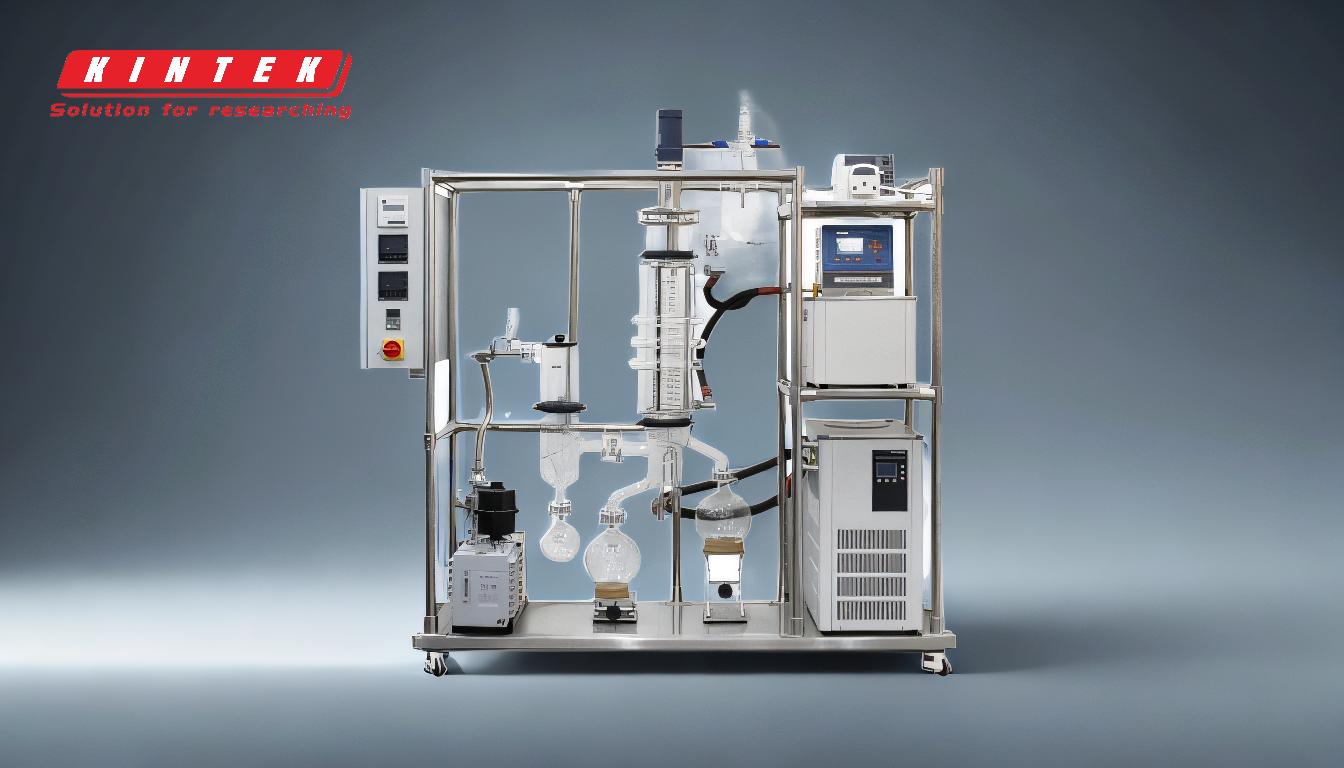Molecular distillation is indeed a separation technique, primarily used for the purification and concentration of thermally sensitive, high molecular weight materials. It operates under extremely low vacuum pressures (≈ 0.01 torr) and leverages the differences in the mean free paths of molecules to achieve separation. Light molecules, with longer mean free paths, escape the liquid surface and condense on a nearby surface, while heavy molecules, with shorter mean free paths, return to the liquid phase. This process is particularly effective for natural products, complex molecules, and materials that are sensitive to heat, such as fish oil and cannabinoids. The technique is characterized by its gentle conditions, low temperatures, and minimal thermal degradation, making it ideal for preserving the integrity of delicate compounds.
Key Points Explained:

-
Definition and Principle of Molecular Distillation:
- Molecular distillation is a type of short-path vacuum distillation that operates under extremely low vacuum pressures (≈ 0.01 torr).
- The process exploits the differences in the mean free paths of molecules. Light molecules have longer mean free paths and can travel to a condensing surface, while heavy molecules, with shorter mean free paths, return to the liquid phase.
- This separation occurs without boiling, as the process operates at temperatures below the boiling point of the materials, preserving the integrity of thermally sensitive compounds.
-
Applications of Molecular Distillation:
- Separation and Purification: Molecular distillation is used for the separation, purification, and concentration of natural products, complex molecules, and thermally sensitive materials.
- Thermally Sensitive Materials: It is particularly effective for materials that degrade at high temperatures, such as fish oil, cannabinoids, and other high molecular weight compounds.
- Contaminant Removal: The process effectively removes contaminants while preserving beneficial compounds, such as fatty acids in fish oil.
-
Operational Conditions:
- Low Pressure: Molecular distillation operates under very low vacuum pressures (≈ 0.01 torr), ensuring that the distance between the hot and condensing surfaces is less than the mean free path of the molecules.
- Low Temperature: The process uses low temperatures and gentle conditions to minimize thermal degradation and preserve the quality of the materials being processed.
- Short-Path Design: The condensing surface is placed close to the heated evaporation surface, which is crucial for the effective separation of compounds.
-
Advantages of Molecular Distillation:
- Minimal Thermal Degradation: The low temperatures and gentle conditions prevent the degradation of thermally sensitive materials.
- High Purity: The process achieves high levels of purity and concentration, making it ideal for the production of high-quality natural products and complex molecules.
- Energy Efficiency: The unique design of molecular distillation devices, such as rotating film systems, ensures efficient separation with minimal heating time and energy consumption.
-
Safety Considerations:
- Hazardous Materials: Molecular distillation can involve the processing of flammable materials, requiring careful handling to avoid explosion risks.
- Equipment Design: The equipment must be designed to maintain the necessary vacuum levels and ensure the close proximity of the condensing and evaporation surfaces.
-
Comparison with Other Distillation Techniques:
- Vacuum Distillation: Molecular distillation is a specialized form of vacuum distillation that operates at much lower pressures and is designed for the separation of thermally sensitive materials.
- Short-Path Distillation: Molecular distillation and short-path distillation are essentially the same processes, both involving high vacuum and close proximity of condensing and evaporation surfaces.
In summary, molecular distillation is a highly effective separation technique for thermally sensitive, high molecular weight materials. Its ability to operate under low temperatures and vacuum pressures, combined with its unique design, makes it ideal for preserving the integrity of delicate compounds while achieving high levels of purity and concentration.
Summary Table:
| Aspect | Details |
|---|---|
| Principle | Separation based on differences in mean free paths of molecules under low vacuum (≈ 0.01 torr). |
| Applications | Purification of thermally sensitive materials like fish oil, cannabinoids, and natural products. |
| Operational Conditions | Low pressure (≈ 0.01 torr), low temperature, and short-path design. |
| Advantages | Minimal thermal degradation, high purity, and energy efficiency. |
| Safety Considerations | Requires careful handling of flammable materials and precise equipment design. |
Learn how molecular distillation can enhance your material purification process—contact our experts today!









